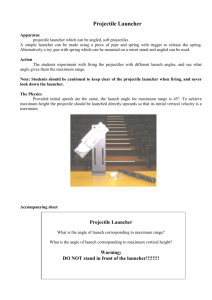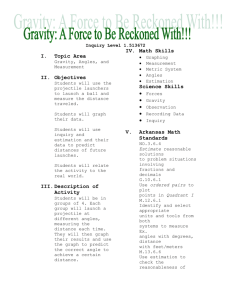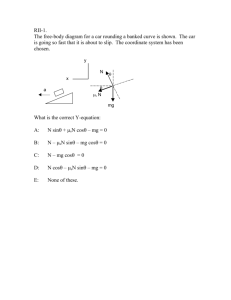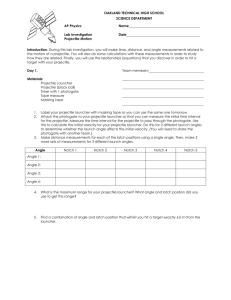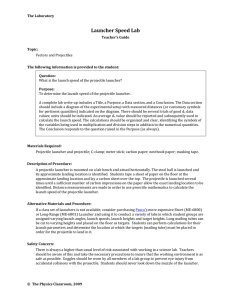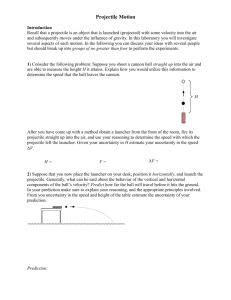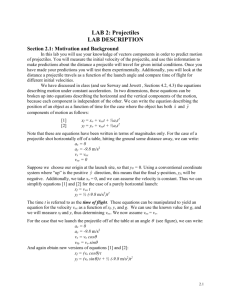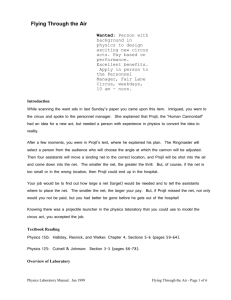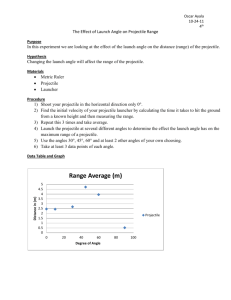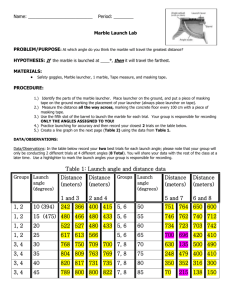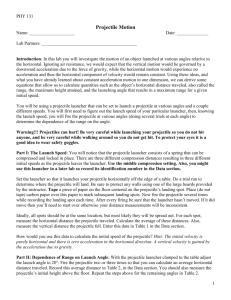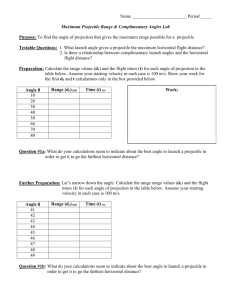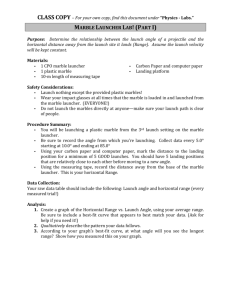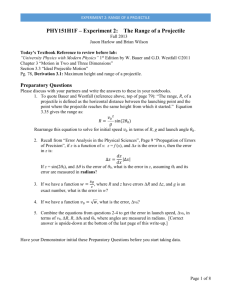MS Word - The Physics Classroom
advertisement
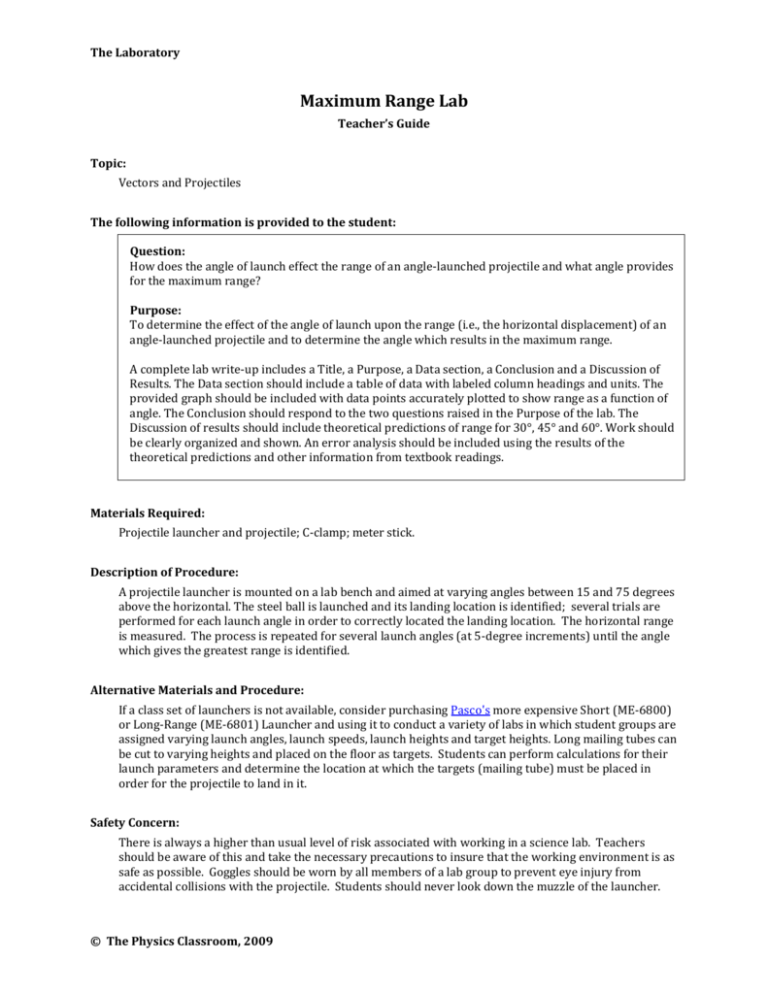
The Laboratory Maximum Range Lab Teacher’s Guide Topic: Vectors and Projectiles The following information is provided to the student: Question: How does the angle of launch effect the range of an angle-launched projectile and what angle provides for the maximum range? Purpose: To determine the effect of the angle of launch upon the range (i.e., the horizontal displacement) of an angle-launched projectile and to determine the angle which results in the maximum range. A complete lab write-up includes a Title, a Purpose, a Data section, a Conclusion and a Discussion of Results. The Data section should include a table of data with labeled column headings and units. The provided graph should be included with data points accurately plotted to show range as a function of angle. The Conclusion should respond to the two questions raised in the Purpose of the lab. The Discussion of results should include theoretical predictions of range for 30°, 45° and 60°. Work should be clearly organized and shown. An error analysis should be included using the results of the theoretical predictions and other information from textbook readings. Materials Required: Projectile launcher and projectile; C-clamp; meter stick. Description of Procedure: A projectile launcher is mounted on a lab bench and aimed at varying angles between 15 and 75 degrees above the horizontal. The steel ball is launched and its landing location is identified; several trials are performed for each launch angle in order to correctly located the landing location. The horizontal range is measured. The process is repeated for several launch angles (at 5-degree increments) until the angle which gives the greatest range is identified. Alternative Materials and Procedure: If a class set of launchers is not available, consider purchasing Pasco's more expensive Short (ME-6800) or Long-Range (ME-6801) Launcher and using it to conduct a variety of labs in which student groups are assigned varying launch angles, launch speeds, launch heights and target heights. Long mailing tubes can be cut to varying heights and placed on the floor as targets. Students can perform calculations for their launch parameters and determine the location at which the targets (mailing tube) must be placed in order for the projectile to land in it. Safety Concern: There is always a higher than usual level of risk associated with working in a science lab. Teachers should be aware of this and take the necessary precautions to insure that the working environment is as safe as possible. Goggles should be worn by all members of a lab group to prevent eye injury from accidental collisions with the projectile. Students should never look down the muzzle of the launcher. © The Physics Classroom, 2009 The Laboratory Care should be taken at all times when launching the projectile. Student horseplay and off-task behaviors should not be tolerated. Suggestions, Precautions, Notes: 1. 2. 3. 4. 5. Pasco Scientific sales a mini-launcher (ME-6825A) which comes with a steel ball, a plumb bob and a built-in protractor scale. The launcher can launch the steel ball at three different speeds and at multiple angles (including downwards, thanks to a magnet which holds the ball in place as the muzzle is pointed downward). While pricey, it is Pasco's least expensive launcher. Avoid losing the steel balls; a hefty price will be paid for their replacement. The launch speed of the projectile launcher was determined in the Launcher Speed Lab. Angling the launcher upward does not make an appreciable change in the launch speed. Students should be sure to use the same launcher which they used in the Launcher Speed Lab. It is important that the landing location be at the same height as the launch location. Books, notebooks, and other objects can be stacked to form a landing surface which is at the same height as the launch height. Emphasize safety. Students are using a gun - a low speed gun, but still a gun. Auxiliary Materials: None Scoring Rubric: VP11. Maximum Range Lab Included, labeled and organized all parts of the lab report. Data section includes a data table of angle-range values; column headings and units are labeled. A plot of range vs. angle is completed; plotted values seem reasonably accurate. Conclusion describes the complexities of how the angle of launch effects the range; correctly states the angle which provides for the maximum range; conclusions are consistent with data. Discussion of Results demonstrates how the range can be determined using kinematic equations. Work is shown, labeled, organized and accurate. Includes error analysis to evaluate the reliability of the measurements; indicated expected answer to the angle of maximum range and compared the expected to the actual value determined in the lab. Score _____/_____ Connections to The Physics Classroom Tutorial: The following reading is a suitable accompaniment to this lab: http://www.physicsclassroom.com/Class/vectors/u3l2f.cfm Connections to Minds on Physics Internet Modules: There is no sublevel in the Vectors and Projectiles module that focuses on the method of projectile problem-solving. © The Physics Classroom, 2009
